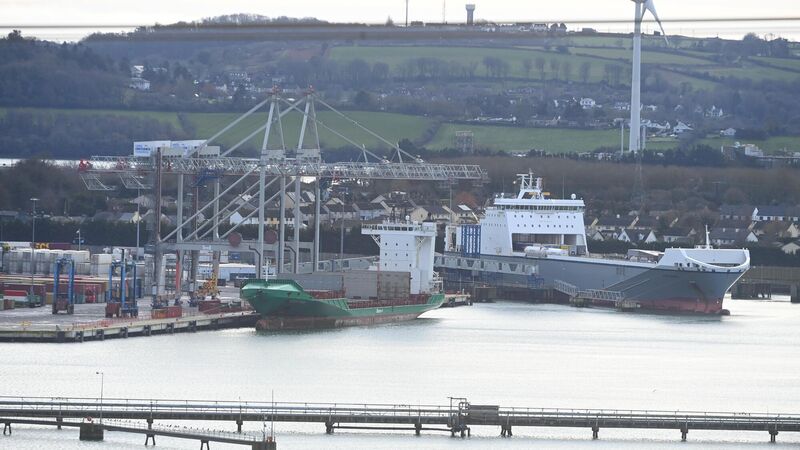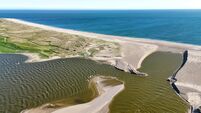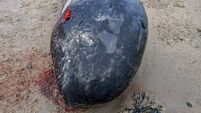Irish ports 'may be targeted' by cocaine cartels

Fears have been expressed that Irish ports such as Ringaskiddy in Cork could be targeted by South American cocaine cartels trying to avoid tighter scrutiny at major EU ports. Picture: Larry Cummins
Fears have been expressed that Irish ports could be increasingly targeted by South American cocaine cartels as they try to avoid tighter scrutiny at major EU ports.
The EU drugs agency warned that as a result of “scaled up” law enforcement in key ports in Belgium, the Netherlands, and Spain, there was evidence that international gangs were “increasingly targeting smaller ports” in other EU countries.
The European Monitoring Centre for Drugs and Drug Addiction (EMCDDA) did not say which countries were at risk in their annual report, but agency expert Laurent Laniel said it “may well include Ireland”.
Michael O’Sullivan, former head of the Maritime Analysis and Operations Centre, Narcotics (MAOC-N) — the EU transatlantic drug interdiction body — said it was likely cocaine cartels would probe smaller ports in other EU countries, including Ireland, if there was too much scrutiny at the major ports of Antwerp and Rotterdam.
But the former garda assistant commissioner said that the sophisticated and longstanding logistics involved in the "industrial-level" trafficking into those ports could not just be moved to smaller ports at the “flick of a switch”.
In its European Drug Report 2023, EMCDDA said cocaine seizures had increased four-fold in the last 10 years, reaching new “record” levels in 2021, with 303 tonnes seized.
Belgium (96 tonnes), the Netherlands (72 tonnes), and Spain (49 tonnes) accounted for almost 75% of the total quantity seized.
Preliminary data for 2022 shows that 110 tonnes of cocaine was seized at Antwerp, up from 91 tonnes in 2021.
“Evidence suggests that organised crime groups are also increasingly targeting smaller ports in other EU nations, as well as in countries bordering the EU,” the report said.
Mr Laniel, principal scientific analyst on drug supply reduction, said this “may well include Ireland”, but added he had no specific data on Irish ports.
Last month, authorities in Sweden said that one of its ports, Helsingborg, had become "the point of transit for South American cocaine" on its way to the illegal European market, after almost 870kg were seized since the start of this year, compared to 822kg in the whole of Sweden last year.
Mr O’Sullivan, who retired as director of MAOC-N in 2022, said: “If Colombian cartels believe it's getting too tight in Antwerp or Rotterdam they will consider every opportunity to get their containers in and that includes Dublin Port or Cork and ports in other countries.”
But he added: “Container people are well organised, they have people bribed and threatened in ports in Antwerp and Rotterdam. They have a local network there. Colombian cartels have spent years building this up, in order to bring in industrial levels of cocaine.
“The logistics to set that up in Dublin or Cork or wherever takes time, people bribed, etc. But getting one or two shipments in is very different than suddenly sending a stream of shipments in. But these cartels have time and don’t have to worry about budgets. But for the industrial-level trafficking, they will continue to use Antwerp and Rotterdam."
Here, Revenue figures show that 63kg of cocaine was seized in 2019, rising to 101kg in 2020 and to 800kg in 2021.
Last April, 55kg of cocaine was discovered in Ringaskiddy Port in Cork inside a refrigeration unit of a container originating from Ecuador.
Last January, gardaí seized 45kg of cocaine, also inside a refrigeration unit, at Dublin Port.
In February 2021, 172kg of cocaine was seized inside a container in Ringaskiddy which had travelled from Costa Rica in an operation in which the Kinahan cartel was suspected of being involved.










